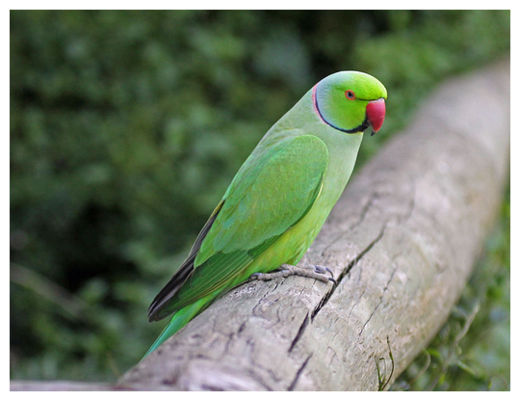
Stanwell, England - The evening started peacefully enough at Long Lane Recreation Park in the western suburbs of London. But just before sunset, five bright green missiles streaked through the air toward a row of poplars at the park's edge.
Within minutes, hundreds more of the squawking birds - in formations 10, 20, 30 strong - had passed above the tidy homes and a cricket club, whizzing toward their nightly roost.
Native to the Indian subcontinent and sub-Saharan Africa, the rose-ringed parakeet is enjoying a population explosion in many London suburbs, turning a once-exotic bird into a notorious pest that awakens children, monopolizes garden bird feeders and might even threaten British crops.
One rough estimate put the population in Britain at 30,000 a few years ago, up from only 1,500 in 1995. Researchers at Imperial College London are now trying a more scientific census through its Project Parakeet, which enlisted volunteer birders around the country for simultaneous counts on a recent Sunday evening.
There is wide agreement that the Adams and Eves behind the current population boom did not fly here from Asia or Africa but escaped from British pet cages or were intentionally released by their owners. The great mystery is what allowed the parakeets to procreate with such phenomenal success just in the past decade.
Theories abound. Is it that gardeners are planting more exotic ornamental plants, effectively providing imported food to match an imported bird species? That suburbanites are installing more feeders and putting out more seed? The booming British gardening industry guards sales figures and has provided little guidance.
Alternatively, some scientists suggest that a slightly warmer climate has indeed helped tip the balance, perhaps increasing the parakeet's metabolism during its February breeding season, bolstering the growth of some of its favored food or killing off a predator.
Perhaps the answer lies in the numbers game that prevails in any dating venue: once the population passed a certain threshold, it was more likely that each parakeet could find a mate and make a home in the suburbs.
The new bird census may help shed some light on the trend. Scientists, birders and policymakers are "waiting with bated breath for these latest numbers," said David Leech, senior research ecologist at the British Trust for Ornithology.
British officials are watching trends closely since the parakeets have proved major agricultural pests elsewhere, ravaging crops in places like India.



Reader Comments
to our Newsletter